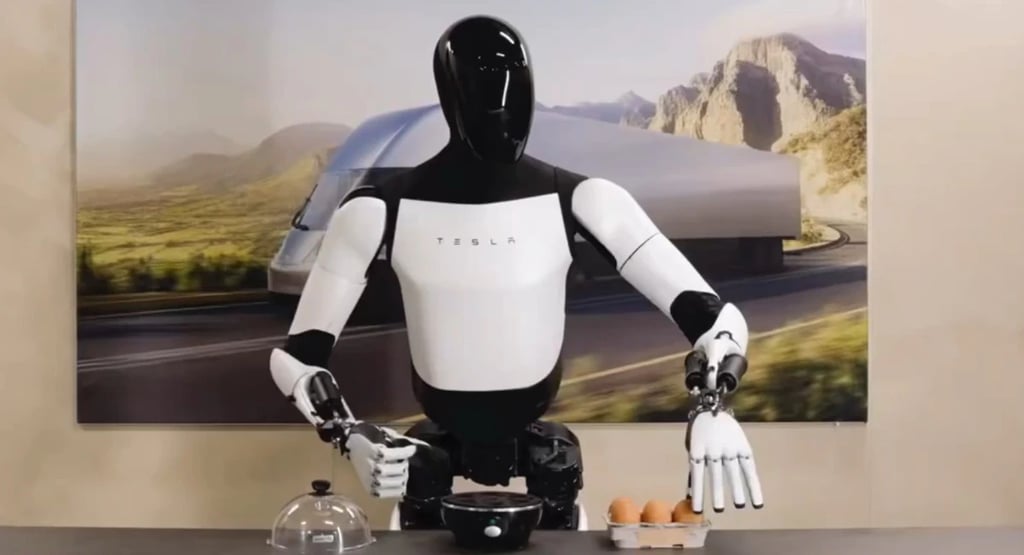Tesla’s Optimus Robot Set to Revolutionize Caregiving: Elon Musk Unveils Vision of 24/7 Robotic Nurse
Elon Musk’s vision for Tesla’s Optimus robot is redefining the boundaries of robotics and caregiving alike. In a recent wave of bold announcements, Musk asserted that Tesla’s humanoid robot could soon serve as a round the clock nurse capable of providing not just routine assistance, but continuous, attentive care for the elderly, disabled, and anyone needing physical support.
IN BRIEFTECHNOLOGY
Thinkbrief
7/23/20252 min read


Elon Musk has drawn global attention by declaring that Tesla’s humanoid robot, Optimus, could serve as a full-time nurse or personal assistant for those in need of physical support. Speaking in a July 2025 interview, Musk described how Optimus is being engineered to operate as a “24-hour day nurse,” highlighting its potential to dramatically reshape healthcare and elder care settings. Beyond hospital walls, he emphasized that Optimus could also take on dangerous, repetitive, or physically demanding jobs, implying broad applications for home and workplace environments12.
Tesla has been accelerating Optimus development, unveiling updated prototypes that demonstrate increasingly agile and coordinated movement. Recent demonstrations showcase the robot’s advanced abilities: walking fluidly, maintaining balance, self calibrating limbs, and performing intricate manual tasks like grasping or sorting objects. The robot’s hardware is complemented by upgrades leveraging Tesla’s automotive and AI expertise, enabling real-time navigation, object interaction, and robust environmental awareness3.
Musk projects that Optimus’s autonomy and reliability will make it well-suited for continuous care providing comfort to families and institutions coping with staff shortages or rising care demands. He suggests Optimus robots will relieve human caregivers from monotonous or hazardous duties, freeing up professionals for high-value tasks. With a price target between $20,000 and $30,000, Tesla foresees mainstream adoption after 2026, making the vision of robotic personal assistants accessible to households, hospitals, and care facilities alike34.
As Tesla ramps up internal deployment and hones the robot’s capabilities, Musk’s vision signals a future where robots play pivotal roles in caregiving, safety, and everyday life pressing the boundaries of artificial intelligence and industrial innovation even further23.
Tesla is investing heavily in partnerships and pilot programs to demonstrate Optimus’s potential in diverse settings. Early feedback from healthcare administrators is cautiously optimistic: robots could alleviate pressure on overwhelmed staff, handle hazardous cleaning or lifting tasks, and provide companionship for those most at risk of isolation. But many stress that technology should augment, not replace, the human touch particularly in medicine and eldercare, where trust builds over countless small daily interactions.
One reality is undeniable: the march of robotics is accelerating. As Optimus matures and Tesla’s vision advances from concept to commercialization, families, caregivers and policymakers will face urgent decisions about the roles these remarkable machines should play. Whether celebrated as a liberator or met with skepticism, the Tesla Optimus robot has already pushed society to confront the profound possibilities and limits of technology in the most personal realm of all care for one another.